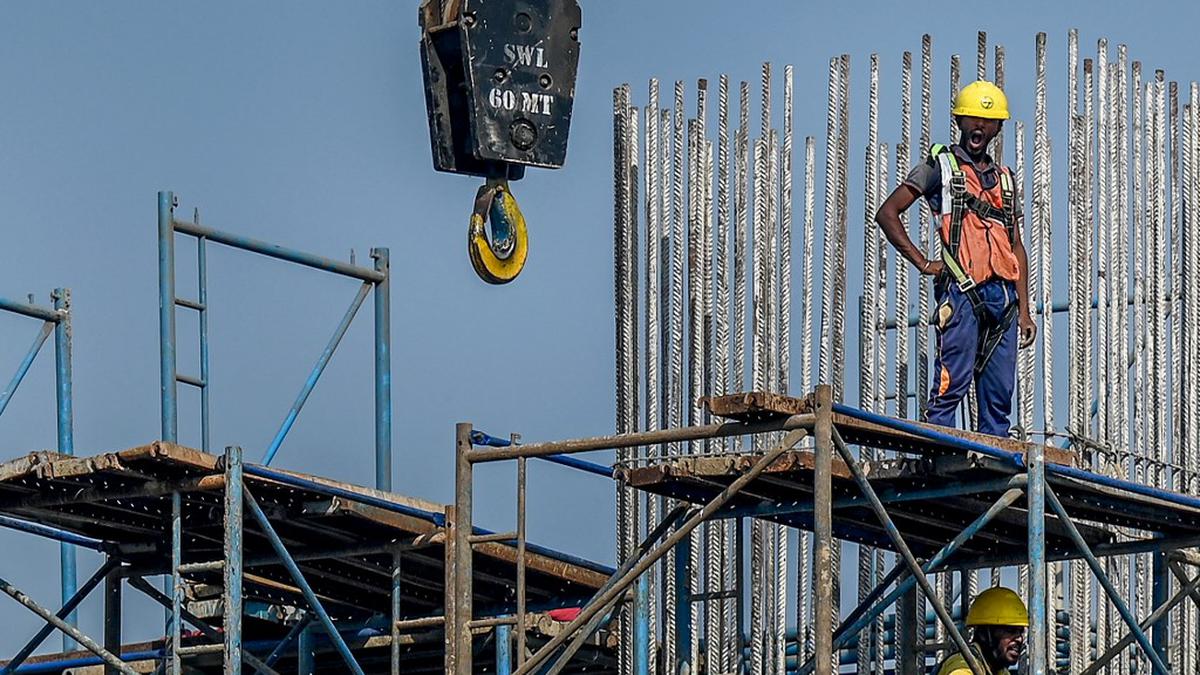Capital expenditure (capex) by the Central and State governments increased by 61.2% sequentially in the third quarter (Q3) of 2022-23 to 7.1 lakh crore, despite a 41% drop in private sector investments from 6.31 lakh crore in Q2 to 3.71 lakh crore.

What is the definition of Capital Expenditure (CAPEX)?
- Capital expenditure refers to investments made by the government or private businesses in upgrading existing or constructing new physical assets.
- Capex has a multiplier effect on the economy as businesses expand, creating demand and releasing animal spirits.
Types of CAPEX
- A company’s long-term value can be attributed to a variety of assets. As a result, there are some purchases that can be classified as CAPEX.
- Buildings can be used for office space, manufacturing, inventory storage, or other purposes.
- The land could be developed further. Accounting treatment may differ for land held speculatively as a long-term investment.
- Machinery and equipment may be used to manufacture goods and convert raw materials into finished goods for sale.
- Computers or servers may be used to support a company’s operational aspects, such as logistics, reporting, and communication of operations. In some cases, software can be classified as CapEx.
- Vehicles can be used to transport goods, pick up clients, or be used for business purposes by employees.
- Patents may have long-term value if the right to own an idea is realised through product development.
Why is CAPEX required?
- Capex is typically used to acquire fixed assets with a useful life of more than one accounting period.
- Infra upgrade: It can sometimes add value to an asset by incurring upgrading and maintenance costs, extending the shell life of an investment.
- Business sustainability: CAPEX increases the company’s long-term profit earning capacity.
India’s Capital spending
- Allocations for infrastructure, primarily roads and railways, have increased in India’s budgets.
- In the previous Budget, FM announced a significant increase in the government’s planned capex.
- In 2022-23, the government will spend 7.5 lakh crore on capital expenditure (even more if grants-in-aid for capital assets, including MGNREGA) — a 27% increase over previous year estimates (2021-22).
- Furthermore, the government has ambitious plans to exponentially increase spending on motorways, logistics parks, metro systems, and housing, with much of this work being outsourced to private contractors.
Challenges of Capital Expenditure
The following are the difficulties encountered as a result of CAPEX-
- Significant funds: Normally, large sums of money are needed to process a capital expenditure, and funds may be scarce. As a result, organisations must make prudent capex decisions.
- Long-term fiscal burden: The amount of Capex is charged as an expense in multiple accounting periods.
- Irreversible: Once a CAPEX has been incurred, the decision cannot be easily reversed. Reversing the capital expenditure decision may prove to be significantly more expensive for any entity.
- Uncertainty: It becomes difficult to anticipate expenses that may arise in the future. CAPEX entails significant costs and outcomes that may be delayed in the future. As a result, characterising the precise decision regarding CAPEX is uncertain, affecting future expenses.
Measurement Problem: It is difficult to identify and quantify the costs and benefits of CAPEX
- Temporal Spread: CAPEX decisions are consistent over time, and the investments they include are referred to as long-term investments. These long-term investments complicate obtaining precise discount rates and maintaining their equivalence in the future.
Why does India prioritise CAPEX?
- Demand stimulation: A focus on capex alleviates supply-chain bottlenecks and revitalises demand.
- Job creation: While capital expenditure increases the economy’s productive capacity, boosting long-term growth, it also stimulates job creation and consumption.
Way ahead
- Timely implementation: By strengthening monitoring, redressal mechanisms, and processes for controlling project delays, emphasis must also be placed on timely implementation of projects within the allocated budget.
- Project management: The solution lies in optimising all key stakeholders’ project management processes, including implementation agencies, state governments, vendors, and others.
- Ensuring quality control: This will also aid in quality control, which will result in capital assets providing benefits over a longer period of time due to the multiplier effect.
- Revenue savings: The government should also aim to reduce inefficient revenue expenditure and focus on creating a balanced and stable virtuous cycle, which can have long-term positive effects.
Source: https://www.business-standard.com/article/economy-policy/capex-by-cpses-accelerates-to-53-of-annual-target-during-apr-oct-period-122111700997_1.html
